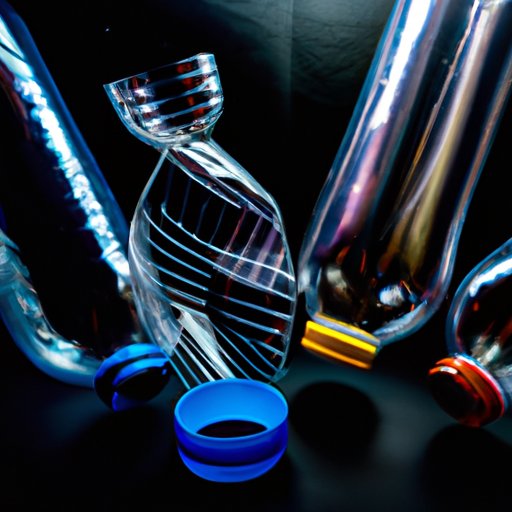Introduction
Plastic has become an integral part of our lives. From packaging to medical equipment, cars to electronics, plastic is everywhere. But how was plastic invented? What is its history? And what are the implications of its invention? This article will explore the historical timeline of the invention of plastic, the scientists behind it, its benefits and drawbacks, the different types of plastic, and how its invention has changed our lives.
A Historical Timeline of the Invention of Plastic
Plastic has a long and complex history. The first synthetic plastic was invented in 1907 by Leo Baekeland, but the beginnings of plastic can be traced back to the 19th century. In 1839, Charles Goodyear discovered the process of vulcanization, which allowed rubber to be heated and molded into various shapes. In 1862, Alexander Parkes created the first plastic made from cellulose and other organic materials. He called it “Parkesine.”
In the early 20th century, several scientists experimented with new ways of synthesizing plastic. In 1909, Belgian chemist Leo Baekeland invented Bakelite, the first fully synthetic plastic. Bakelite was used for telephones, radios, and electrical insulators. Around the same time, Wallace Hume Carothers developed a synthetic polymer called nylon, which was used for everything from clothing to toothbrush bristles.

The Scientists Behind the Invention of Plastic
Alexander Parkes (1813-1890) was an English inventor and chemist who is credited with creating the first plastic made from cellulose and other organic materials. He called this material “Parkesine.”
Leo Baekeland (1863-1944) was a Belgian-born American chemist who invented Bakelite, the first fully synthetic plastic. Bakelite was used for telephones, radios, and electrical insulators.
Wallace Hume Carothers (1896-1937) was an American chemist and inventor who developed a synthetic polymer called nylon. Nylon was used for everything from clothing to toothbrush bristles.

The Benefits and Drawbacks of Plastic
Plastic has many benefits. It is durable, lightweight, and cost-efficient. It can also be easily molded into different shapes and sizes.
However, there are also some drawbacks to plastic. It is non-biodegradable, meaning it takes centuries to decompose. Additionally, plastic pollution is a major issue, as it is estimated that 8 million tons of plastic enter the ocean each year. Finally, plastic can pose health risks, as certain chemicals used in plastic manufacturing have been linked to cancer and other diseases.
Exploring the Different Types of Plastic
There are three main types of plastic: thermoplastics, thermosets, and elastomers. Thermoplastics are the most common type of plastic and can be melted down and reshaped multiple times. Examples include polyethylene, polypropylene, and polystyrene.
Thermosets are plastics that cannot be melted down and reshaped. They are often used for products that require high heat or pressure, such as car parts. Examples include phenolic and urea-formaldehyde plastics.
Elastomers are plastics that are flexible and can stretch and return to their original shape. Examples include rubber and silicone.

How the Invention of Plastic Changed Our Lives
The invention of plastic has had a profound impact on industry and everyday life. In industry, plastic is used in the automotive, packaging, and construction industries. Plastic is lightweight, durable, and cost-efficient, making it ideal for these industries. In everyday life, plastic has increased convenience, reduced costs, and added versatility. Everything from food containers to furniture to toys is now made with plastic.
Conclusion
The invention of plastic has revolutionized our lives. From industry to everyday life, plastic has become an integral part of our world. Although there are drawbacks to plastic, its benefits have made it an invaluable material. Understanding the history and implications of plastic is essential for appreciating its importance in our lives.
(Note: Is this article not meeting your expectations? Do you have knowledge or insights to share? Unlock new opportunities and expand your reach by joining our authors team. Click Registration to join us and share your expertise with our readers.)
